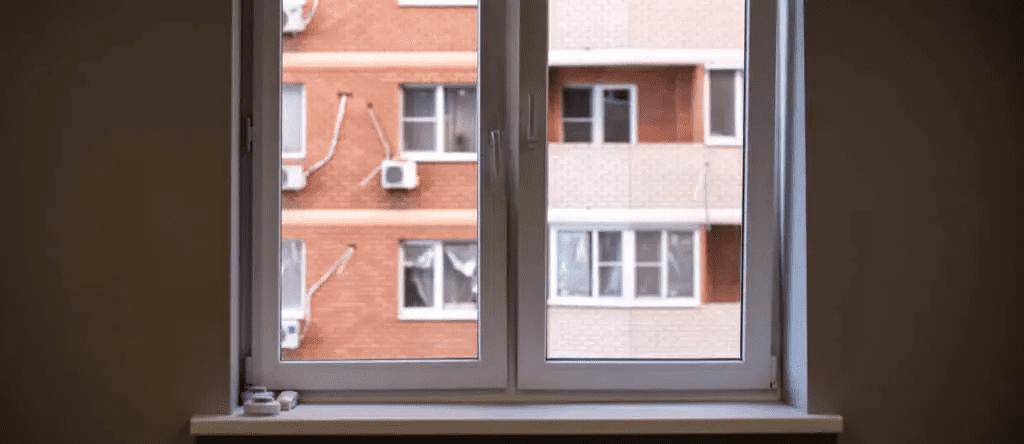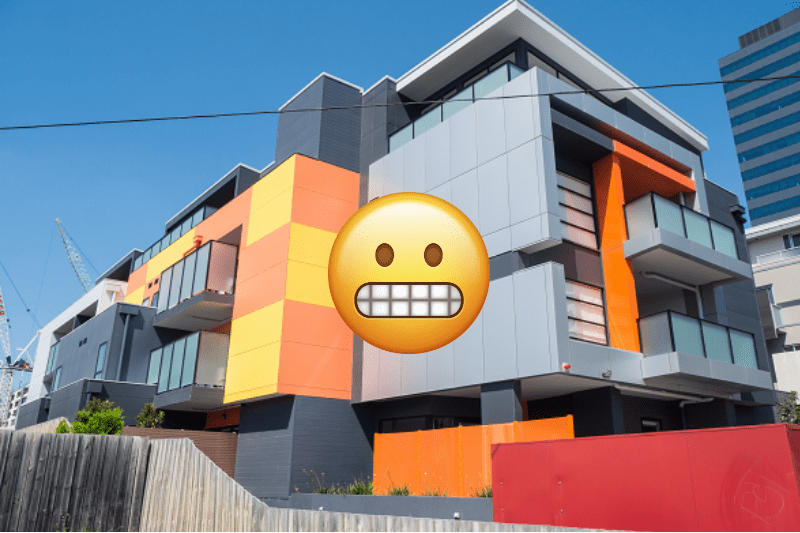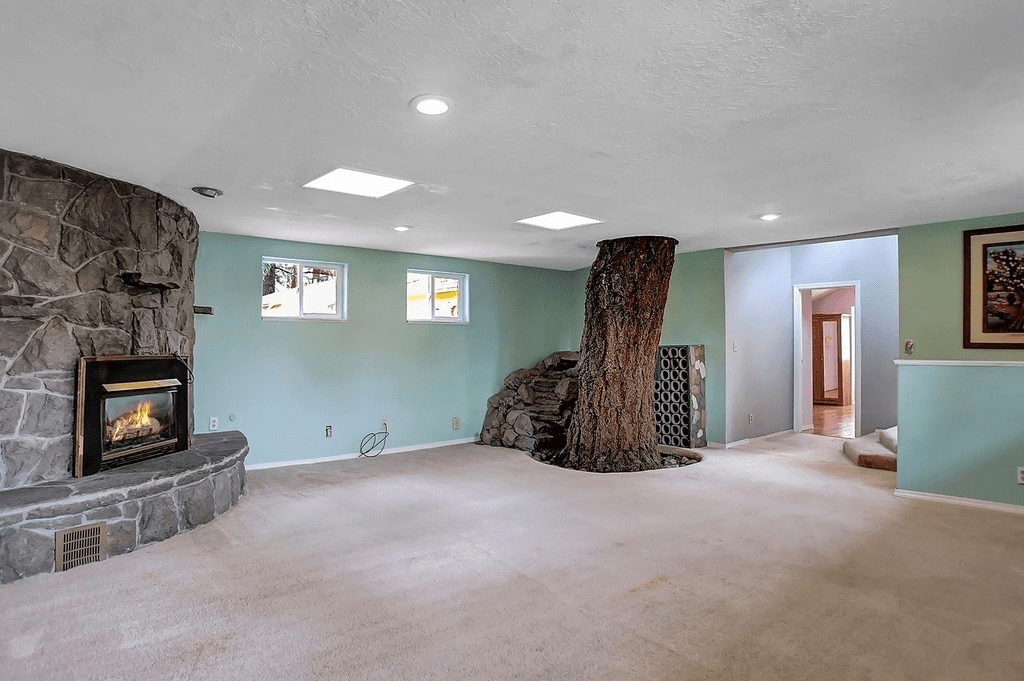Are you on the way to buying your first home? First of all, congrats – especially if you’re a #millennial that was told to quit buying avocado toast and you actually lived by it – not sure if that’s what got you the house deposit in the end, but hey. Saving for a house is no easy feat. Now that you have the money set aside, take our advice for first home buyers: it’s not the time to impulse buy.
Just because the property listing makes it look like your dream home? Doesn’t mean you should agree to the mortgage on the spot. It’s what’s on the inside that counts, and sometimes, real estate agents are sneaky and don’t realllllly show you what’s on the inside, beneath the surface. Don’t make the wrong call; watch out for these 10 property red flags in a listing.
1. Floorplan Looks a Little Off
Straight off the bat, before you even think about heading to an inspection, there are a few things you can watch out for in a property listing alone. There’s a whole bunch of property red flags that live in the floorplan that you can spot before you even take a look at the place.
Every floorplan should include:
- A compass
- A set of dimensions, for scale (even if they’re approximate)
That’s the bare minimum. If you show up to an open home that hasn’t included either of these details on the floorplan in the listing, you’re likely to find yourself in a home that’s either a) much tinier than you anticipated or b) lit completely differently than the listing made it seem, since it’s probably getting far too much sun or not enough, due to the direction the house is facing.
If there’s no floorplan provided whatsoever? Run now, before it’s too late.
2. No Photos of the View

Whether you’re looking at purchasing a standalone home, a unit, or an apartment in the middle of the city, there’s one red flag that always applies: there are no photos of the view.
If the listing doesn’t include photos of the view, it either means:
- Your neighbours are on the unsightly side. Maybe they’re party people, maybe they leave hard rubbish on their curb all year round. Who knows?
- The view is undesirable enough that even the property photographer is avoiding eye contact with it.
There’s also a possibility you’re about to move in across the road from a major construction job that’s going to change the view of your property drastically, or something even noisier: a fire station that has sirens blaring through the night.
You shouldn’t dodge an inspection altogether because of property red flags like this one, but it is worthwhile doing your research ahead of time on Google maps. Take a peek around on street-view before you set your heart on the place.
3. Parking Options are AWOL
If the property listing hasn’t even mentioned parking, or they’ve (unclearly) mentioned something about on-street parking options, you can say goodbye to easy parking. Especially if you’re looking at a place in the inner-city.
Any property listings that don’t lay out your parking options usually have:
- No parking whatsoever
- Impractical parking that doesn’t suit your needs
Even if parking options are mentioned, there are still a few other things you need to watch out for, that they might not detail in the property listing. For example, if it’s an apartment block, your residential parking lot might have a low ceiling height, so you might not be able to squeeeeze your car inside.
Remember: not all parking spaces are made equal. Even if your property offers on-street permit parking, you might forget to account for the excess you have to pay in insurance, since you’re parking your car on the street. These details might seem small, but the investment you’re about to make is big – so it’s worth considering even the small stuff.
4. The Description Admits the Property “Needs Work”
Now, a fixer upper can be a magical thing… if you know what you’re getting yourself into, and you’re willing to put the work in. Only problem is, real estate agents tend to be pretty sneaky; they don’t want you to know the difference between an investment and a money pit when it comes to worn down properties.
The best way to guarantee you’re not going to get ripped off is to learn the translations of real estate jargon:
- If they describe it as“full of character”, it hasn’t be updated in a long, long time.
- If they describe it as a“heritage gem”, it means it’s worn down, and you’re going to need to jump through a lot of hoops to get it renovated.
- If they describe it as“full of potential”, it’s probably a property that’s been with the same family for decades, and this is the first time it’s been listed this century. Prepare to need to tear the whole thing down.
- If they describe it as“liveable”, take a step back. That’s a pretty low bar for a noteworthy feature, right? “Liveable” means it’s not really liveable.
Aside from those cover-ups, older properties that need work tend to pretty expensive to fix up. Bonus features your real estate agent will fail to mention include termites, mould, and solid walls and ceilings (that are impossible to work with, especially if you’re installing new electrical features or a ceiling fan).
Get your hands on a hard hat and start prepping with On-Site Storage.
5. Positioned Near an Intersection (No Thanks)
Bad news. Purchasing a property that’s near an intersection will disrupt your quality of life in more ways than one.
Get used to:
- Waking up in the night thanks to traffic noise at +1000 volume.
- Suddenly realising that cars are louder than trains.
- Constantly sweeping your balcony (cars kick up dust).
- Never finding a parking space.
- Adjusting to noise pollution (and the other kind of pollution).
- Saying goodbye to privacy and a quiet night in.
Worst of all, you’re likely to see less return on your investment – a property on a main road or near a major intersection has reduced street appeal, therefore making selling your property for a good price a lot trickier down the line.
6. It Was Built Between 2000-2010

We promise we’re not conspiracy theorists, or that all houses built between 2000-2010 are haunted. It’s really because this was the peak of popularity in building properties with flammable cladding.
There are at least 3,400 buildings with flammable cladding Australia-wide, so it’s worth doing your research before you put the deposit down and find out your home could go up in flames in a matter of minutes. You can dodge a bullet by finding out something like this early on, indicating that some other not-so-safe practices might have gone on during the building process.
7. You Can Spot Bendy Floors (or Warpy Walls)
It’s not an optical illusion – if you can spot some bendy floors or warpy walls at an open home, prepare for bad news. This damage is a sign of heavy, built-up moisture that’s gradually been damaging the foundation of the home over time (yikes).
This also goes for cracks in the walls, peeling paint, or “bubbling” paint. If a house has severe enough problems with damp that it’s causing structural damage like that, it’s generally not worth the amount of money you’re going to have to sink into structural problems this deep.
For Apartment Listings…
If you’re in the market for an apartment to be your first investment, there are a few property red flags you should watch out for that are specific to apartment-hunting.
8. Lobby Photos Come Up Before Property Photos
If the listing thinks boasting about the lobby is more important than showing off the apartment you’re going to be living in, ask yourself: what’s wrong with the actual apartment?
This property red flag also applies to any apartment listings that include photos of the suburb you’re going to be living in before they show the actual apartment. Think coffee shops nearby, pictures of the cityscape (that you’re probably not going to see from your balcony, let’s be honest), or public transport like buses, trams, and trains.
9. A Bunch of Services Are“Included”
If the apartment listing you’re looking at is bragging about having a trendy rooftop garden, a receptionist, a gym, or a pool, it only means one thing: you’re going to be paying more than you planned. Ain’t no such thang as a free lunch; serviced apartments are expensive, and require you to pay a chunk of costs to owners’ corp.
If having a rooftop BBQ sounds like a nice idea, have a think before you commit to it. Is it really worth paying more for a service you only use a few times a year?
10. There’s No Balcony
Skyrise apartments – alongside a lot of inner-city apartments – don’t come with a balcony. This is either because of the height of the building, or simply because of where the place is situated.
It’s worth weighing up whether you can actually live in an apartment with no balcony before you take the plunge and commit to the mortgage (generally, having the freedom to walk outside isn’t something you appreciate until it’s taken away from you).
Ready to Make Your Move?
Feeling more confident going into the market as a first time home buyer, now that you have some property red flags up your sleeve? Let TAXIBOX lend a hand in getting the process started. With TAXIBOX, you can store between moves, renovate your new home, or simply start planning your move.
When you don’t have to worry about all of the stressful moving stuff, you can spend more time focusing on the important stuff: getting a good deal on the house of your dreams. When you’re ready to make the call, you know who to call… or head to our website, even if it doesn’t sound as catchy (you can book online anytime).

Get prepared with TAXIBOX – focus less on your stuff and more on the mortgage stuff.
Book Online

